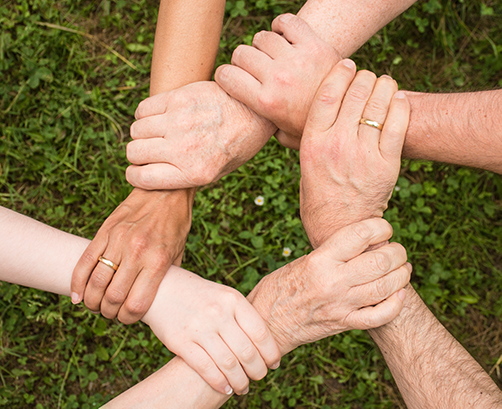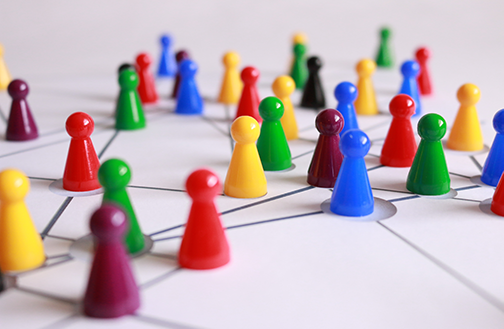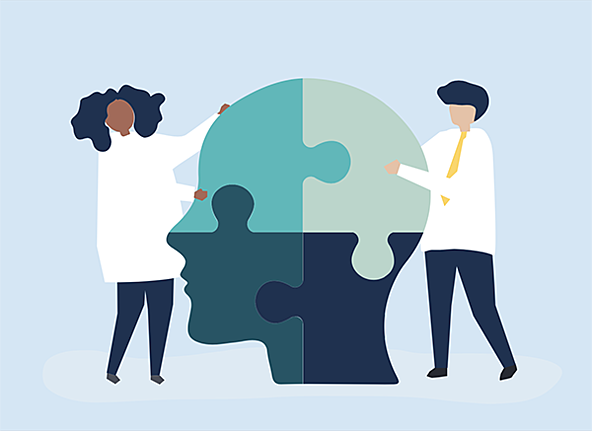Rare Disease

A rare disease is defined as a disease that only affects a small percentage of the world population. The signs that individuals experience throughout their health journey can differ from one rare disease to another. Some diseases may be more severe than others. There are also a wide variety of causes of rare diseases, including, genetics, infections, environmental factors, and allergies.
To learn more about rare diseases, continue reading below.
What is a Rare Disease?
A rare disease is defined as a disease that only affects a small percentage of the world population. Currently, 3.5% to 5.9% of the total world population is affected by and diagnosed with a rare disease; this means that more than 300 million people worldwide belong to the rare disease community. (Rare Disease Day)
A disease can be categorized as rare in one country but not in another, depending on how common the disease is given the population. A disease can be common but have a certain variant that classifies the disease to be rare. (Orphanet Canada)
There are more than 6,000 types of diseases that are classified as rare. It is estimated that 72% of rare diseases occur mainly due to genetics but may also be caused by environmental factors, infections, and allergies. (Rare Disease Day; GARD)
Supporting content
Signs and Characteristics
The signs that individuals experience throughout their health journey can differ from one rare disease to another. Two or more individuals with the same rare disease may also show different signs and symptoms. Some diseases may be more severe than others. Often, individuals with a rare disease are misdiagnosed because their symptoms present similarly to other medical conditions and rare diseases. (AOP Orphan; Rare Disease Day)
Half of the rare disease community display signs right after birth or before they are eight years old. The other half notice signs throughout adulthood. 70% of individuals that are diagnosed with rare genetic diseases experience the first symptom during childhood. (AOP Orphan; Rare Disease Day)

Screening and Detection
There has been an international shortage of scientific knowledge, research, and treatment relating to rare diseases, as there are thousands of diseases and variants that affect a smaller population; due to this, researchers and doctors are constantly searching for different ways to prevent, screen, and treat rare diseases. (Orphanet Canada)
Whether a rare disease can be prevented or not depends on the type of disease and the root cause of the disease. Causes of rare diseases are genetics, infections, environmental factors, and allergies. (Rare Disease Day; NIH)
Genetics
Rare genetic diseases occur as a result of changes in genes or chromosomes. Chromosomes are made up of DNA. Most rare genetic diseases tend to present themselves during early childhood. Genetic testing is one way to screen for a rare disease, especially for newborns. If you are interested in screening and genetic testing your child, consult with your health care provider. (University of Minnesota Health; NIH; GARD)
/Photos%20-%20Stock%20Images/Doctor%20testing.png?width=400&height=600&name=Doctor%20testing.png)
Infections
Rare bacterial and viral infections are not caused by genetics; they are caused by bacteria and viruses found in surrounding environments. Rare infections are much harder to prevent since there is not much information regarding these infections; rare infections are not very common. According to research, general prevention protocols for infections should be followed in order to prevent the transmission of viruses and bacteria. Prevention protocols involve practicing good hygiene, following food-safety techniques, staying up to date on immunizations, following safe sex guidelines, and avoiding bugs and animals who are carriers of viruses and bacteria. (GARD; Harvard Health Publishing)
Environmental Factors
Rare diseases that are caused by environmental factors may be prevented. Environmental factors that can indirectly cause or increase the chance of disease include smoking, and exposure to chemicals and toxins. Limiting an individual's exposure to harmful environmental factors can decrease an individual's likelihood of developing a rare disease. (NIH)
/Photos%20-%20Stock%20Images/Hand%20Washing.jpg.png?width=400&height=600&name=Hand%20Washing.jpg.png)
Allergies
Studies have shown that both genetic and environmental factors may cause rare allergy diseases. A health practitioner can do skin tests and blood tests in order to screen for allergies; however, this is not always an option for rare allergy diseases. Allergic reactions can be mild to severe and happen when an individual's immune system creates antibodies after reacting to a foreign substance. Symptoms can affect any part of the body. If an allergic reaction takes place, it is essential to note the symptoms that occurred and the possible trigger(s). It is equally important to visit a health practitioner if an allergic reaction occurs. (Treated; Mayo Clinic)
Rare Disease Management
There are currently thousands of rare diseases, and the current diagnosis time for a rare disease can range from months to years. Due to the shortage of information and rare disease research, there are currently no direct treatment options for 95% or more rare diseases; however, some symptoms may be alleviated. The extent to which an individual is able to manage the symptoms of a disease depends on the type of rare disease an individual has been diagnosed with. (Rare Disease Day; AOP Orphan; GARD; NORD)
For example, medical practitioners have found that there are rare cancer diseases that can be managed through surgery, radiation, and chemotherapy. Symptoms that come about from rare infectious diseases may be alleviated through the use of anti-parasitic and antibiotic drugs. Genetic disorders may be treated with surgery, hormone therapy, or medication. Since there are thousands of types of rare diseases, treatments that work for one individual or disease may not be of use to other individuals or to treat other rare diseases. (Rare Disease Day; AOP Orphan; GARD; NORD)
In order to receive a diagnosis and find what symptom management treatment is best for you, it is vital that an individual consult with a medical practitioner. (GARD)
Supporting content
Living with a Rare Disease
If an individual is living with a rare disease, there are a few things that should be kept in mind:
- Rare diseases are constantly evolving. They can be degenerative or proliferative. This means these diseases can worsen the health of an individual over time. It also means that the cells responsible for the rare disease may multiply at a rapid rate. (Rare Disease Day)
- Living with a rare disease is a continuous learning experience for the individual and their caregiver(s). (Rare Disease Day)
- Whether there are treatment plans for rare diseases or not, the biggest source of assistance for the individual is his or her caregiver(s), family, and friends. (Rare Disease Day)

- Patience and support from others are key, as diseases may take weeks, months, or years to be correctly diagnosed. (AOP Orphan)
- There are many organizations, self-help and support groups for individuals living with rare disease. (AOP Orphan)
- The individual is not alone; although it may seem like rare diseases only affect a small percentage of the world population, if the total population of individuals living with a rare disease were put together, this population would occupy the third-largest country in the world. (Rare Disease Day)

Types of Rare Diseases
There are more than 6,000 types of rare diseases. Rare diseases may be directly or indirectly caused by genetic mutations, environmental factors, infections, and allergies. These rare diseases can be classified into over 14 different categories. These categories include but are not limited to cancers, allergic, immunologic, cardiac, metabolic, infectious, neurologic, and pediatric diseases. (Medscape; Rare Disease Day)
The majority of rare diseases occur due to inheritable and non-inheritable genetic mutations.
Four types of rare diseases that are caused by genetic mutations are Mitochondrial, Fabry, Gaucher, and Pompe disease. (Medscape; Rare Disease Day)
Mitochondrial Disease
Mitochondrial disease refers to an inherited group of diseases. These diseases occur as a result of a genetic mutation of the mitochondrial DNA, which causes mitochondrial dysfunction. Mitochondrial disease may affect many body parts, such as the liver, kidneys, pancreas, brain, digestive tract, and muscles. (MitoCanada)
To learn more about Mitochondrial disease, prevention, symptoms, and treatment, click here.
Supporting content
Fabry Disease
Fabry disease is a type of inherited genetic disorder. It occurs as a result of a genetic mutation in an individual's X-chromosome. Some symptoms are skin rashes, pain throughout the hands and feet, or a sharp pain throughout the body. Other symptoms of Fabry disease include renal dysfunction, cardiac disease, and respiratory abnormalities. (NORD; Canadian Fabry Association)
To learn more about Fabry disease, prevention, symptoms, and treatment, click here.
Gaucher Disease
Gaucher disease is a genetic disorder. Gaucher disease is inherited if both parents carry the disease.
There are three types of Gaucher disease: Types 1, 2, and 3. Gaucher disease is caused by low levels of glucocerebrosidase, an enzyme that breaks down a fatty chemical in the body. (National Gaucher Foundation)
To learn more about Gaucher disease, prevention, symptoms, and treatment, click here.
Pompe Disease
Pompe disease is an inherited genetic disorder that is caused by a deficiency of an enzyme needed to break down glycogen. The main symptoms of Pompe disease are muscle weakness, mobility and respiratory problems. These symptoms are usually seen throughout the first three years of an individual's life. (Canadian Association of Pompe; Cleveland Clinic; NORD)
To learn more about Pompe disease, prevention, symptoms, and treatment, click here.
Mental Health
Living with a rare disease can impact an individual's mental health, especially while going through the process of receiving a diagnosis. Since little is known, there can be several misdiagnoses that can be anxiety-inducing, frustrating and stressful. These feelings can also present themselves at any point during an individual's health journey. (Psychiatry Advisor)
Caregivers, family, and friends of an individual living with a rare disease may also experience mental health disorders; studies have found that about 80% of caregivers struggle with managing their mental health. (CORD)
If an individual living with a rare disease, caregiver, family member, and/or friend is dealing with mental health issues, it is crucial that they visit their health care specialist.

Resources
We've complied a list of resources to help you get started on your new journey
MitoCanada Foundation:
- Mitochondrial Disease Resources
- Learn about the Mitochondrial Disease Rights and Responsibilities Charter
Fabry International Network:
Canadian Fabry Association:
National Gaucher Foundation:
Contributor:

Laura Pinzon
Topic Specialist
From Our Blog
%20(10).png?width=940&height=788&name=Updated%20Blog%20Images%20(Blog%20listing)%20(10).png)
Improving Mental Health
-1.png?width=940&height=788&name=Updated%20Blog%20Images%20(1)-1.png)
Guide to Creating Routines and Healthy Habits
%20(12).png?width=940&height=788&name=Updated%20Blog%20Images%20(Blog%20listing)%20(12).png)
.png?width=500&height=200&name=Zamplo%20Logo%20(1).png)
